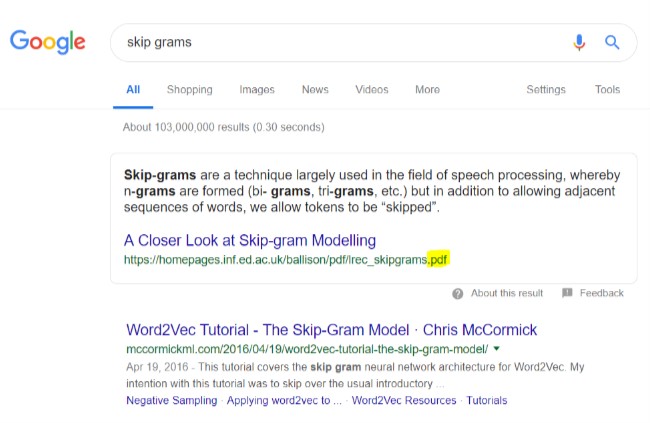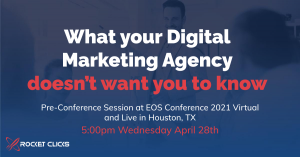This Week’s Industry News
Compiled by the Rocket Clicks Team
Top Stories
Google is Pulling PDF Content for Featured Snippets
Google has been spotted pulling content from PDFs for featured snippets. This means that your PDF whitepapers and Case Studies could gain a featured snippet. This results will likely vary from user to user based on what Google believes is most relevant to the individual. You can optimize your PDFs for better rank potential by choosing your file name carefully, link to the document internally, add an optimized document title, tailor content for the mobile PDF experience, and use alt text on the images you include.

Source: Search Engine Journal
Google Expands Availability of 15-Second Non-Skippable Video Ads
Google announced Tuesday that it will make 15-second non-skippable video ads available to all advertisers, not just those buying through the YouTube reservation process and its premium Google Preferred network of top YouTube channels. The 15-second spot is Google’s most popular video ad format and is expected to be fully available across Google properties, including YouTube, in the coming weeks. These non-skippable in-stream ads can be valuable for branding and reach and for advertisers who want to repurpose existing creative designed for television and other non-skippable environments. Source: Marketing Land
Target Users By Interest in LinkedIn
LinkedIn announced that advertisers can now target users based on their professional interests. Over 200 professional interests are available, like artificial intelligence, global economy, customer experience, and more. The addition of interest targeting will allow advertisers to create more relevant ads, and allows them to add interest targeting on top of existing targeting options such as targeting specific accounts and targeting people by degrees. LinkedIn has been testing Interest Targeting over the past few months, with customers seeing a 25% increase in click-through rate. Source: Search Engine Journal
Analysis
Why Google Sometimes Ignores Rel=Canonical
Google might think the URLs are the same content if they return mostly the same content to Google. With JavaSCript based sites, the content side is a common reason for this because if you’re using a SPA-type setup where the static HTML is mostly the same, and JavaScript has to be run in order to see any of the unique content, then if JavaScript can’t be executed properly, the content ends up looking the same for Google. If the code works for Googlebot and is mobile-friendly, then it’s worth estimating if the speed of processing might be an issue. See how long it takes the page to load the critical/unique content and how many resources are required to get there. Google might not be able to pick up the unique content on the page if it is all loading through JavaScript. Source:Search Engine Journal
Making the Most Out of Paid Facebook Content
- Match Your Message to Your Audience – similar to Google Ads, having a high quality score (or relevance sore) will help to lower the cost per click of your ad. One of the best ways to improve your relevance score is to match your message to the intended audience because the higher the ad relevance, the higher the click through rate, which leads to a better relevance score and a lower cost per click.
- Build Out Audiences Right Away – use customer lists as audiences to target in your campaigns. This will help to identify people that are already familiar with your brand, If your lists are not large enough for a campaign, create a lookalike audience that will be similar to your current customers.
- Split Test Ad Creative – To avoid ad fatigue, it’s best to habitually split test your ads. These are tests where you change big things, like running a video ad against a custom image ad to see which performs better in a selected audience.
- Focus Budget on Middle and Bottom of Funnel Campaigns – driving awareness is important, but it’s usually more expensive to go for the broad, top funnel audience. Try focusing your budget on the smaller, more defined, higher converting middle/bottom funnels audiences.




















